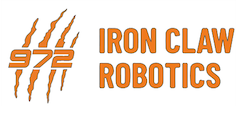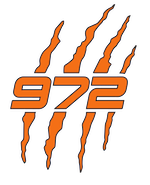Our team participated at the Silicon Valley Regional, March 1-3, 2024. We had about 45 students on the team attend the event which was held at the Santa Clara Fairgrounds. The team had a slow start working through various issues before the lunch break on Saturday. During the afternoon session, the team’s robot began to perform well on the field scoring notes reliably in the Amp, Speaker and getting on Stage during the end game; our human player was also able to score some high notes during our matches. The team ended the qualifications round in rank 16th. During the playoff alliance selection, we were the first pick for alliance captain 5, The Wildhats – team 100, the second alliance member selected was Eagleforce – team 2073. The alliance of team 100, 972, and 2073 worked their way through the playoffs to reach an equal 3rd place out of a field of 42 teams.

The team was also awarded the Industrial Design Award sponsored by General Motors. This award celebrates the team that demonstrates industrial design principles, striking a balance between form, function, and aesthetics. The judges highlighted the following when presenting the award – In the realm of robotics, where innovation meets functionality, one team has set the bar high with their exceptional approach to design. Embracing the principles of a clean and modular design, they have created a reliable robot that is also a breeze to maintain and adapt. With a robust intake neatly tucked within the frame perimeter and an inverted control system, they’ve demonstrated that thoughtful design can lead to formidable performance. Dressed in striking orange and black, this bot has clawed its way through the competition with elegance and strength.

After coming back from the Silicon Valley Regional, the team feels proud of what they accomplished, and motivated to do even better at the Central Valley Regional (CVR), week 4. In the upcoming weeks, our team’s main focus will be on the software side making improvements to the performance of our robot in its speed, scoring accuracy using April tag vision assist, and autonomous routine options. Our driver, operator and human player will also be spending a lot of time on our practice field refining their skills.
During the regional, our team realized the full importance of a speedy robot with fast cycle times, as we witnessed Citrus Circuits, Quixilver, and the Blazing Bulldogs move around the field at an incredible speed. To improve this facet of our robot, we will implement a new style of swerve software, one that generates a “trajectory”, or a series of points, to calculate wheel angle multiple times while driving, more complicated to implement, but absolutely worth it.
We believe that a large portion of future performance in regionals will be determined by scoring from a distance rather than just from the subwoofer. Therefore, we will focus much of our efforts to ensure our robot consistently scores the note into the speaker from further back on the field, and also while our robot is moving towards the speaker, by using April tags for scoring alignment.
Before SVR, our software team was not given much time to test our autonomous routines, which led to the unfortunate inconsistency and, often low-scoring, start of the match. With the weeks leading up to CVR , we will have ample time to tune the auto routines selected by our Strategy Team to perfection, ensuring a strong showing in that portion of the match.
Our autonomous ability will be greatly assisted by our vision system which will use April tags for alignment when scoring. While unfortunately we were unable to incorporate vision at the SVR regional, we have high hopes for just how far we can take our vision capabilities to the next level. Vision could assist in potentially reducing our cycle times through automated alignment prior to shooting a note into the speaker or amp, so we look forward to seeing how well our robot performs with it.
During the competition, our software team was hard at work in the pits adjusting autonomous routines, velocity constants for mechanisms, and logging and looking at tons of data sets to identify what is going well, and what is going not so well, in our robot. With this knowledge, we are fully confident that they will be able to improve every aspect of the robot for the teams upcoming regionals.


On the hardware side, there were some minor but easily fixable issues. We had some problems with our chain on our arm, but, due to our carefully decided geometry, we were still able to shoot into the speaker from the subwoofer despite it. Although our robot did suffer some heavy defensive hits, we had spares parts and a serviceable design, which allowed for quick replacements by our hardware pit team between matches. Overall, we are satisfied with our intake, arm, and shooter subsystems and we plan to further work on our robot’s durability for the upcoming competitions.


The team is working on a detailed CVR action plan to ensure they can use the scheduled 49 hours of work time efficiently, and field a very competitive robot with faster cycle times and auto routines that have been prioritized by the Strategy team. We are looking forward to competing at the CVR in week 4, and wish the best of luck to all teams!

